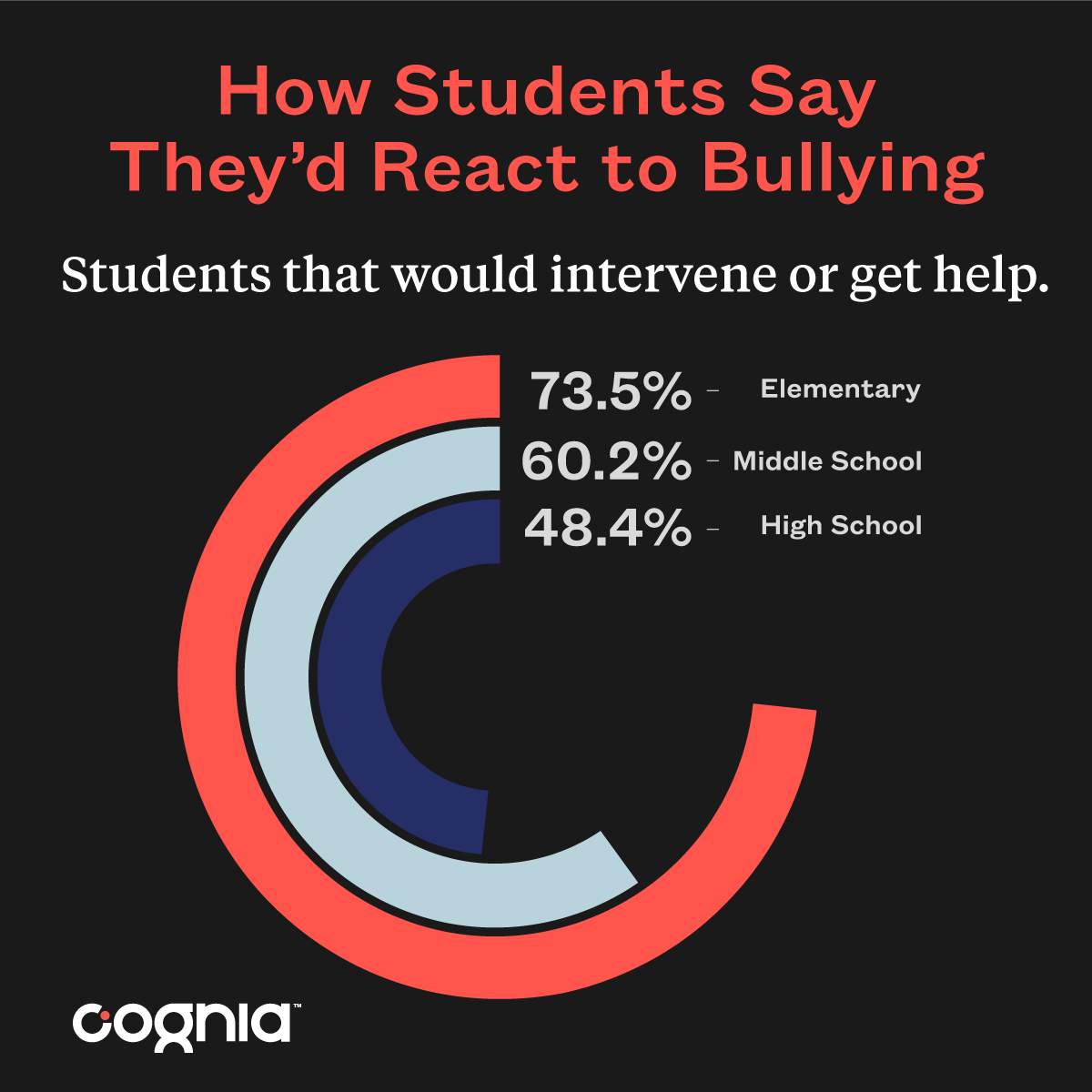
Bullies have always been a problem for humans. From the school yard to the back yard and even into our offices in the “grown up” world (LaMotte, 2019), some people simply take advantage of the perceived weakness in others. Of course, the rise of social media has complicated the issue tremendously. In the past, a student being bullied, if she were lucky, only had to wait until she got home to the safety of family and loved ones to be rid, if only for the night, of the bully’s harassing behaviors. Unfortunately, students today live with the reality that even when they are not at school, a bully can mass communicate threats and assaults through no shortage of social media platforms. In seconds a bully can hurl insults or make veiled threats toward a student and have hundreds of peers as a live audience. What is worse, apps like Snapchat can provide an added degree of protection to the bullies by erasing any evidence of the insult before only the quickest reactors can take a screen shot. Even then, the bully would be notified of the vulnerability, perhaps motivating them to find yet one more person to punish.
Are We Losing Ground?
Unfortunately, we seem no closer to solving the bullying problems our children face than we were to solving the problems when they were our own. Sometimes it even feels like we are losing ground. A shocking example of this recently occurred in September of 2019 when a 16-year-old high school student in New York was stabbed during a fight at a nearby strip mall while bystanders looked on and recorded the fight on video. As was reported in CNN, “Some took out their phones and documented the fight on social media, but no one stepped in to help [the victim], who died from his wounds after being taken to the hospital” (Thompson, 2019). This behavior is absolutely unconscionable, so much so that one wonders how it was even possible that this could happen in the first place.
What Would Your Students do?
We would all like to believe something like this could never happen again. While no one can predict the future, research from Cognia™ can perhaps offer at least some glimmer of hope that most students would respond differently in such a situation. As part of the Student Engagement Survey we provide to schools and institutions in our continuous improvement network, students are asked to indicate what their most likely reaction would be if they were to witness another student being picked on. Thankfully, preliminary findings from the first wave of respondents reveal that an overwhelming majority (73.5%) of elementary students indicated that they would either personally step in to help the student or go find an adult who could. Approximately 60% of middle school students in the survey responded with one of those choices as well. While a somewhat smaller percentage of high schoolers (48.4 %) selected one of those options, it is still good to know that nearly half of older students would selflessly intervene.[1]
What about the onlookers in New York, though? How many students think they might behave like that? Based on the self-reported data from the Cognia Student Engagement Survey, only 3.1% of elementary school students and 4.0% of middle school students indicated that they would stop and watch if they saw a student being bullied. High school students, on the other hand, were twice as likely to have responded that way to the same question. It is tempting to take some comfort that even 8% is still a relatively small number. However, this means that around one out of every 13 high school students surveyed reported that they would watch while another student was being harassed. It does not take a very large student body for one in 13 to add up to a crowd of onlookers. The reports of the New York stabbing, for example, suggested that the crowd of bystanders included somewhere from 50 to 70 teenagers (Thompson, 2019). It is unclear from the news story whether these were all students from the same (or any) high school, but it is nevertheless alarming that such a crowd would form anywhere.
It is worth keeping in mind that a number of limitations and considerations might keep us from losing all hope. First, these data reflect students’ responses to a survey item asking what they would do in a hypothetical situation. This does not necessarily mean the student would in fact behave in the way they indicated should a real situation occur. Second, though the nearly 2500 student respondents belong to public and private elementary, middle, and high schools across the United States (and one school in South America), the results cannot necessarily be generalized to any particular sector, grade level, or region of the U.S. or the rest of the world. Furthermore, the survey does not specifically ask about violent or life-threatening situations.
Taking A Stand Against Bullying
It is also worth noting that many people, young and old, are willing to take a stand against bullying. A young boy in Florida, for example, received an outpouring of public support after he drew a “U of T” logo on a piece of notebook paper, pinned it to an orange shirt, and wore it to school for “College Colors Day” because he did not own an officially licensed University of Tennessee shirt. He was subsequently bullied by some of his peers, leading his teacher to post the unfortunate story on social media. The tale quickly went viral, and soon after, the university released an officially branded shirt bearing the child’s design. Across the nation, alumni, students, fans, and general supporters of humankind bought thousands of the shirts, with proceeds going to support a charity aimed at preventing bullying (Elassar, 2019). The university even offered the young boy a full scholarship for when he graduates high school (McCarthy, 2019).
Heartwarming stories like these remind us that many people are willing to take a stand to eliminate bullying. We know, however, that we still have much to learn and more progress is needed to better protect and support the most vulnerable among us. This is particularly important when we consider that students that are bullied have no choice but to go to school every day and be subjected to possible torment.
Unfortunately, there are no silver bullets–that we know of–for solving the bullying problem in our schools. However, as we move deeper into the post-“No Child Left Behind” era of accountability through assessment, we have increasing opportunities to focus on the non-academic measures allowed for under the Every Student Succeeds Act.
We must be careful in how we respond to the emerging new data sources, though. We have seen in many cases that simply collecting mounds of data does little more for us aside from checking the box of compliance. For evidence of this, look no farther than to the “data rooms” found in schools across the country, where educators display walls full of information that has done little to improve their knowledge about students’ needs.
Through continued collaboration between researchers and practitioners, however, we can improve our ability to provide educators with the tools, training, and resources they need to provide a healthy environment for all students so that they can thrive and grow to become the leaders of tomorrow. One step in that direction includes a commitment to carefully curating the ways in which data like these are reported so that interpretations become more intuitive. Time remains a scarce resource for our educators, and any opportunity we have to present more insights and fewer forgettable metrics should be one that we take. Instead of providing statistics, researchers should focus more on telling data-rich stories.
Measuring Student Engagement—What’s Not in Textbooks
School leaders have actionable next steps, too. This article has provided some new information related to 2500 students’ attitudes toward bullying. It does not, however, tell a specific school what its own students’ attitudes are toward bullying. Though resources such as our Student Engagement Survey are available, school leaders must make the commitment and find the time to use these kinds of tools. Although the Every Student Succeeds Act does not elevate these measures to the same level as academic achievement, it does signal the importance of measuring items whose answers aren’t found in textbooks.
To learn more about Cognia and our work with educators and institutions across the globe, please visit www.cognia.org.


 Jeffrey Harding, Ph.D.
Jeffrey Harding, Ph.D.